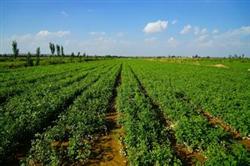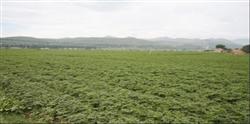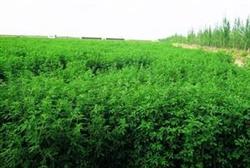It is better to plant licorice in autumn, otherwise it will affect seedling emergence and seedling protection.

1. Selecting and preparing land to cultivate licorice should choose sandy loam with deep soil layer and low groundwater level, and ploughing about 30 cm. At present, flat farming is mostly carried out, and high beds are rarely made. For good drainage and irrigation, the land can also be turned into small beds and fertilized with base fertilizer. It is best to turn the soil in autumn, and the soil moisture must be preserved in spring, otherwise it will affect seedling emergence and seedling preservation. 2. The mode of reproduction: seed propagation is the main method in production, and rhizome propagation is also possible. (1) seed propagation: soak the seeds in 60 ℃ warm water for several hours before sowing, grind the seeds with the same amount of glass residue and grind the seeds for half an hour, or soak the seeds with concentrated sulfuric acid (concentrated sulfuric acid: water is 1 / 1. 5) for about 1 hour. Spring sowing is from March to April and autumn sowing is from August to September. Strip sowing according to the row spacing of 50 cm to open a shallow trench, ditch depth of 3 cm, evenly spread the seeds into the ditch, and then cover the soil. The hole seeder opened the hole according to the hole distance of 10-15 cm, sowed 3-5 seeds per hole and used 2-3 kg of seeds per mu. Keep the soil moist after sowing, cover the seedbed with grass, water the soil when the soil is dry, and emerge two or three weeks after sowing. (2) Rhizome propagation: in spring and autumn, the rhizome is dug out and cut into small segments of about 5 cm. There should be 1-2 buds in each section, buried in the ground, with a depth of about 20 cm according to soil moisture. (3) ramet propagation: many new plants can germinate next to the old plants of licorice and can be dug up and planted in spring or autumn. 3. Field management (1) Irrigation: it should depend on soil type and salinity: sandy non-saline-alkali or slightly saline-alkali soil can be irrigated after sowing; soil viscosity or salinity is heavy, so irrigation before sowing, soil moisture sowing and no irrigation after sowing should be carried out to avoid soil consolidation and salinity increase. The key to artificial cultivation of licorice is to protect seedlings. Generally, plants are not watered after they grow up. (2) Intertillage weeding: weeding is generally carried out in the year of seedling emergence, and licorice root tillers from the second year, so it is difficult for weeds to compete with them. There is no need for ploughing and weeding. (3) fertilization: sufficient base fertilizer should be applied before sowing, and barnyard manure is better. The annual growth period can be topdressing phosphate fertilizer in early spring, licorice root nodules, nitrogen fixation, generally not lack of nitrogen.
- Prev

Cultivation techniques of Glycyrrhiza uralensis
● growth habit licorice, alias sweet grass root, red licorice, powder grass. Is a leguminous plant. It is used in medicine with root and rhizome. It has the effects of clearing heat and detoxification, moistening the lungs and relieving cough, tonifying the spleen and tonifying qi and regulating various drugs. Licorice grows mostly in the north temperate zone, in plains, mountains or river valleys at an altitude of 0,200 meters. The soil is mostly sandy. Soil.
- Next

Cultivation techniques of licorice seedlings
Abstract: licorice root is the material source of a large number of traditional chinese medicine preparations, and widely used in food, beverage, tobacco, daily chemical industry and other fields, the application prospect is broad. However, due to the lack of wild licorice resources, artificial planting efforts should be strengthened. In order to improve licorice seedling planting technology, Urumqi City Grassland Station carried out licorice seedling planting...
Related
- Fuxing push coffee new agricultural production and marketing class: lack of small-scale processing plants
- Jujube rice field leisure farm deep ploughing Yilan for five years to create a space for organic food and play
- Nongyu Farm-A trial of organic papaya for brave women with advanced technology
- Four points for attention in the prevention and control of diseases and insect pests of edible fungi
- How to add nutrient solution to Edible Fungi
- Is there any good way to control edible fungus mites?
- Open Inoculation Technology of Edible Fungi
- Is there any clever way to use fertilizer for edible fungus in winter?
- What agents are used to kill the pathogens of edible fungi in the mushroom shed?
- Rapid drying of Edible Fungi

